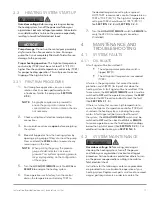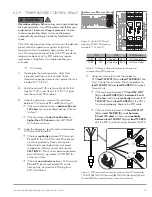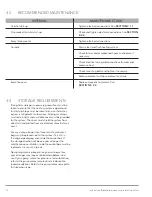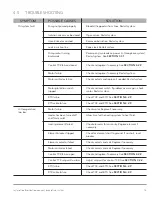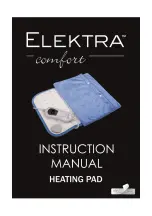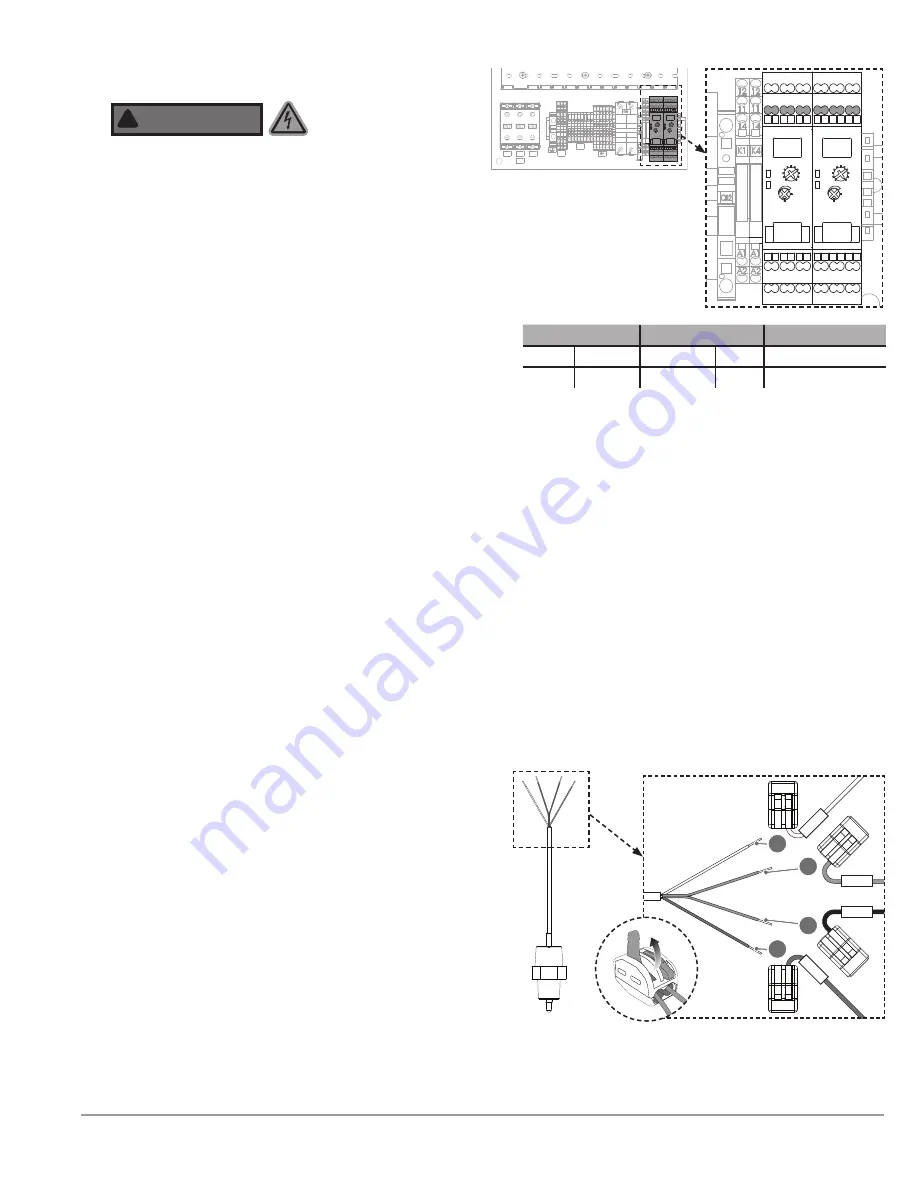
4.2.9 TEMPERATURE CONTROL RELAY
WARNING
!
Hazardous voltage:
Before wiring, servicing or cleaning
the heating system, turn off the power and follow your
organization’s lockout and tagout procedure. Failure
to do so could allow others to turn on the power
unexpectedly, resulting in harmful or fatal electrical
shock.
If the OLA heating system does not maintain the desired
preset control temperature or signals a high-limit
temperature fault immediately upon system start-up,
the TCR (temperature control relay), the RTD (resistance
temperature device), or the RTD cable may require
replacement. To perform this troubleshooting, you
will need:
•
Ohmmeter
1.
De-energize the heating system. Verify fluid
is present and flow is not restricted. Check
temperature gauge to ensure the liquid in the tank
is below 122 °F (50 °C).
2.
Verify the control TCR is set correctly. Verify that
high-limit TCR is set at least 18 °F (10 °C) higher
than the control TCR set point.
3.
Using the ohmmeter, measure the resistance
between TCR terminals
O1
and
O2
(See Fig. 8)
:
h
If the measured resistance is
between 80 and
120 ohms
continue troubleshooting.
Proceed
to step 4.
h
If the resistance is
lower than 80 ohms
or
higher than 120 ohms
,contact HOTSTART
for further assistance.
4.
Using the ohmmeter, test for continuity between
TCR terminals
O2
and
O3
:
h
If there
is continuity
between TCR terminals
O2
and
O3
, the TCR, RTD and RTD cable are
functioning correctly. Close control panel.
Allow fluid to cool below high-limit preset
temperature. Perform system start-up
(see
SECOIO 4
)
. If fault or temperature problems
persist after start-up, contact HOTSTART for
further assistance.
h
If there
is no continuity
between TCR terminals
O2
and
O3
, locate connected RTD on the
heating tank. Unscrew the RTD plug from
RTD.
See Table 3
.
5.
Using the ohmmeter, touch the probes to
RTD
lead OS2:WHO (A)
and
lead OS2:RED (B)
.
See
Fig. 11.
Note the resistance. Touch the probes to
lead OS2:WHO (A)
and
lead OS2:RED (C)
to check
for continuity:
h
If the resistance between RTD
lead OS2:WHO
(A)
and
lead OS2:RED (B)
is
between 80 and
120 ohms
and there
is continuity
between RTD
OS2:WHO (A)
and
lead OS2:RED (C)
, the RTD is
functioning properly. Replace the RTD cable.
h
If the resistance between RTD
lead OS2:WHO
(A)
and
ead OS2:RED (B)
is
not between
80 and 120 ohms
or there is
no continuity
between lead OS2:WHO (A)
and
lead OS2:RED
(C)
, the RTD is malfunctioning. Replace the RTD.
L1
L2
TB1
L3
L1
L2
L3
13
T1
T2
T3
13
MPS1
TB2
X1
2 4 6
1 3 5
7 8 9 1011121314
A1 A3
T1 T2 T3
13 14 A2-
11 12
TCR1
CONTROL
0
100
A1 A3
T1 T2 T3
13 14 A2-
11 12
TCR2
HIGH
LIMIT
0
100
A
B
L1
L2
TB1
L3
L1
L2
L3
13
T1
T2
T3
13
MPS1
TB2
X1
2 4 6
1 3 5
7 8 9 1011121314
A1 A3
T1 T2 T3
13 14 A2-
11 12
TCR1
CONTROL
0
100
A1 A3
T1 T2 T3
13 14 A2-
11 12
TCR1
HIGH
LIMIT
0
100
Figure 8.
Control (TCR1) and
high-limit (TCR2) TCR showing
terminals T1, T2 and T3.
Figure 9.
RTD leads and connectors shown on the RTD assembly,
TSX:WHT
(A)
, TSX:RED (red wire)
(B)
, TSX:RED (black wire)
(C)
, and
Ground
(D)
. Disconnect wire from connector as shown.
OS2EWHO
OS2ERTD
OS2ERTD
(
W
)
D
A
B
C
TCR
TYPE
RTD Position
TCR1
Oil
Control
40 °C
Oil Tank Inlet
TCR2
Oil
High-limit
90 °C
Oil Tank Outlet
Table 3. TCR types, default temperature settings and
corresponding RTD positions.













